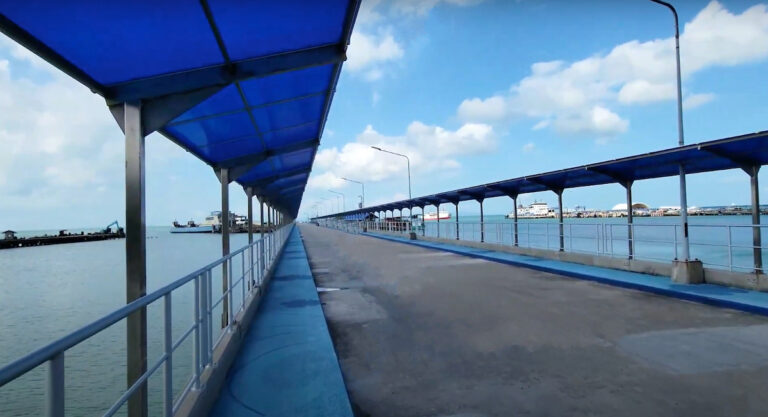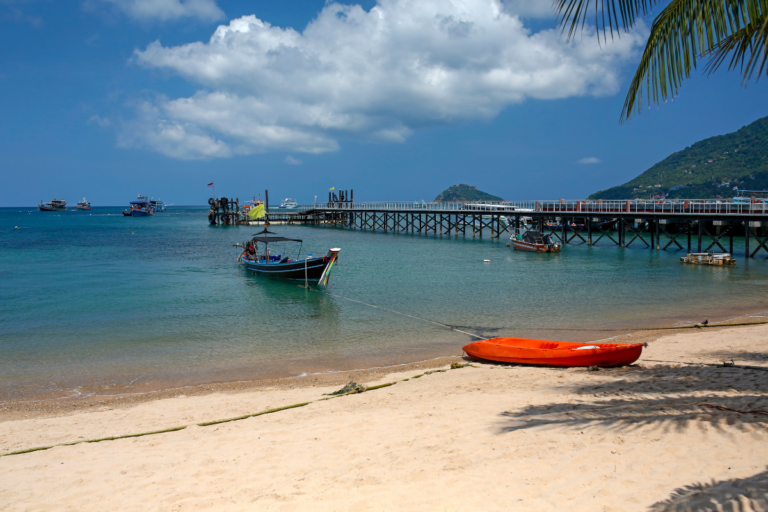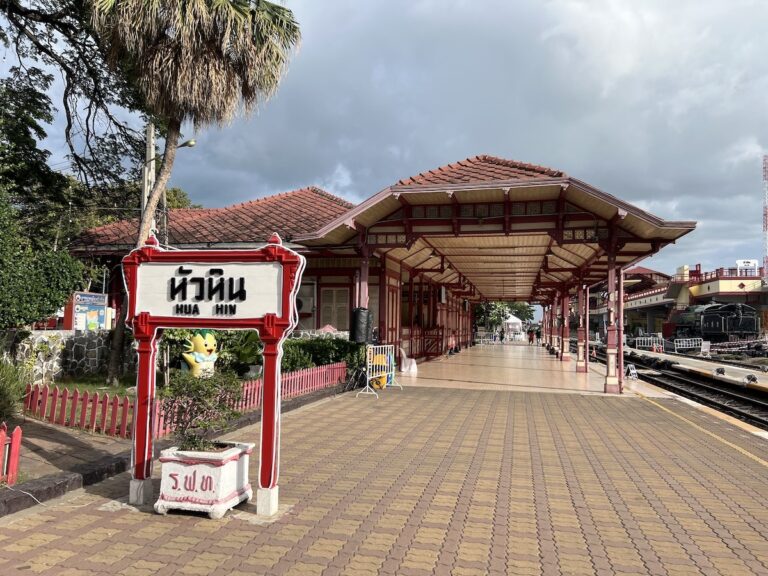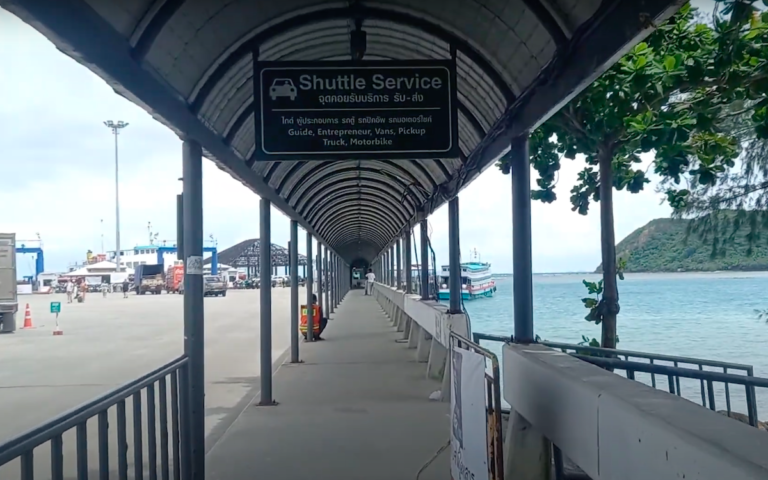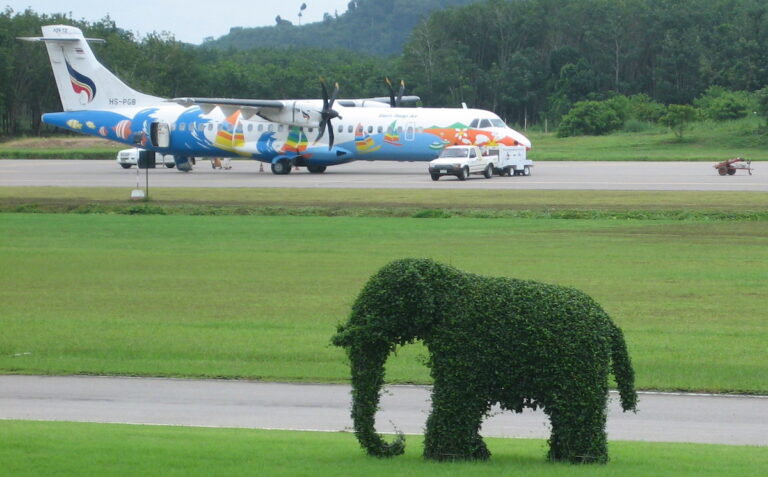Hua Lamphong Bangkok Train Station
Hua Lamphong Station is located in Bangkok’s busy Pathum Wan district near Chinatown. Such a central location and a nearby Hua Lamphong Blue Line MRT Station makes it very convenient for the commutes. Even if you’re not planning to board a train, the station building is a true architectural gem. So if you’re ever around Chinatown, take a stroll to Hua Lamphong and see the charm of the old station building with your own eyes.

Below, we will cover all there is to know about the Hua Lamphong Station – its history and construction, popular routes and departures, facilities and nearby attractions, and how to book the tickets.
Quick Facts about the Hua Lamphong Bangkok Train Station
- Location: Hua Lamphong Train Station is located in the Pathum Wan district in the heart of Bangkok.
- Historical Significance: for many decades it has been the main railway station in Bangkok and it’s also one of the oldest stations in Thailand, opening its doors in 1916.
- Tracks: the station has 14 platforms and 14 tracks.
- Architecture: the station is concrete construction, built in a distinctive Italian Neo-Renaissance architectural style. It was designed by Italian architect Mario Tamagno.
- Operations: the station is operated by the State Railway of Thailand (SRT).
- Facilities: it has all the facilities you would expect to find at the station: ticket counters, indoor and outdoor seating areas, toilet, several cafes, food stalls, taxis.
- Connections: in addition to trains, Hua Lamphong is also a stationwhere many buses make their stops.
- MRT Subway Connection: the station is directly connected to Bangkok’s Mass Rapid Transit (MRT) Blue Line Hua Lamphong station, providing easy access to the city’s network.
- Gateway to Southern Thailand: many trains departing from Hua Lamphong head towards popular destinations in southern Thailand like Phuket, Krabi, and Surat Thani.
Station Contact Information
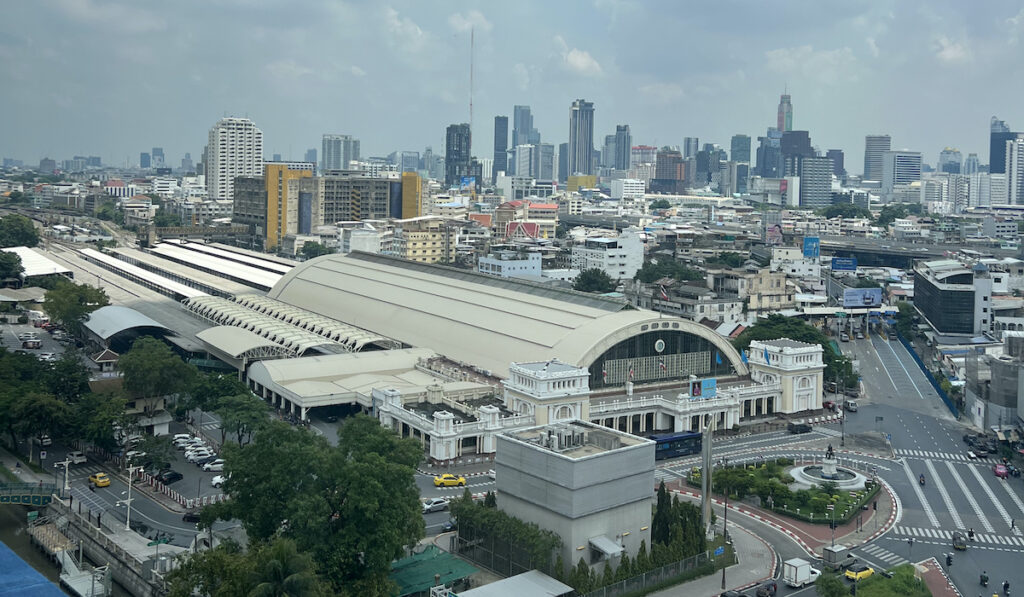
Address: Rong Mueang Rd, Rong Muang, Pathum Wan, Bangkok 10330, Thailand
Phone number: 02 2220175
History and Future of the Hua Lamphong Train Station
For decades, Hua Lamphong was the most important railway hub in Bangkok. For more than a century, from 1916 till January 2023, it was the main railway hub of Thailand. It was also a terminus station for the 4 lines: Northern Line, Easter Line, Northeastern Line, and Southern Line.
Construction of the station began in 1910, during the reign of King Chulalongkorn, and it was officially opened on June 25, 1916, in the era of King Vajiravudh. The station initially served a dual purpose, facilitating the transportation of both goods and people, making it a vital center for commerce and travel.
Architecturally, Hua Lamphong was inspired by Frankfurt’s Central Station in Germany, which opened its doors on August 18, 1888. The station’s distinctive front, designed by Turin-born Mario Tamagno, stands as a testament to Italian Renaissance style.
World War II Shelter
In front of Hua Lamphong Station lies the historic “Elephant Head Fountain Square,” a place with a long history. This square was once repurposed during World War II, when it served as an air raid shelter.
The Elephant Head Fountain is a small but remarkable monument in the form of a three-headed elephant and was originally built as a tribute to His Majesty King Chulalongkorn, Rama V, after his passing.
Its construction was made possible through the collective efforts of railway employees who contributed a total of 9,224 baht and 36 satang. The fountain’s primary purpose was to provide a source of public drinking water for the benefit of train travelers.
The Elephant Head Fountain was opened on June 25, 1916. It has a unique base crafted from marble, crowned with a blackened metal spire that shows a bas-relief portrait of King Rama V along with the three-headed elephant.
During the year 1939, as the ominous signs of upcoming World War II became clear, the authorities saw a pressing need to provide shelter for the local community, particularly those who depended on Hua Lamphong Station for transportation. Given the station’s strategic importance and its vulnerability to potential air raids, the authorities took swift action. They fortified the square with a thick layer of cement, effectively repurposing the Elephant Head Fountain Square into a bunker.
Architecture and Style
What we like most about the station is its unique dome-shaped building, resembling a cylinder cut in half. This design feature sets it apart, giving it an elegant and grandeur appearance.
The construction materials used in Hua Lamphong’s creation were largely imported from Germany. At the heart of the station, a prominent clock was installed within the center of the dome, also looking like the one at Frankfurt Station.
The station is a steel frame structure, and its grandeur is further enhanced by the Western stained glass, which decorates its interior. This stained glass, considered among the finest in Siam, adds a touch of the early 20th century elegance and artistry.
January 2023 Change
From 1916 until January 2023, Hua Lamphong was the main rail transportation hub. The transition away from Hua Lamphong Station as the central railway hub was planned together with the opening of the SRT Dark Red Line.
The proposed relocation to the Krung Thep Aphiwat Central Terminal in 2021 was part of the plan to centralize railway operations in a more modern station. This shift was expected to streamline operations, enhance passenger convenience, and improve the overall railway experience in Bangkok.
However, the transition was delayed because of the opposition. Many people were concerned about the loss of the historical and cultural significance of Hua Lamphong Station, which has been a landmark in Bangkok for over a century.
On 19th January 2023 all the long distance trains were moved to the Krung Thep Aphiwat Central Terminal.
Departures and Arrivals at the Hua Lamphong Train Station
Departures
Even though the long distance trains have been moved, Hua Lamphong Bangkok Train Station still has a lot of departures. Among them are:
Arrivals
Facilities at Hua Lamphong Train Station
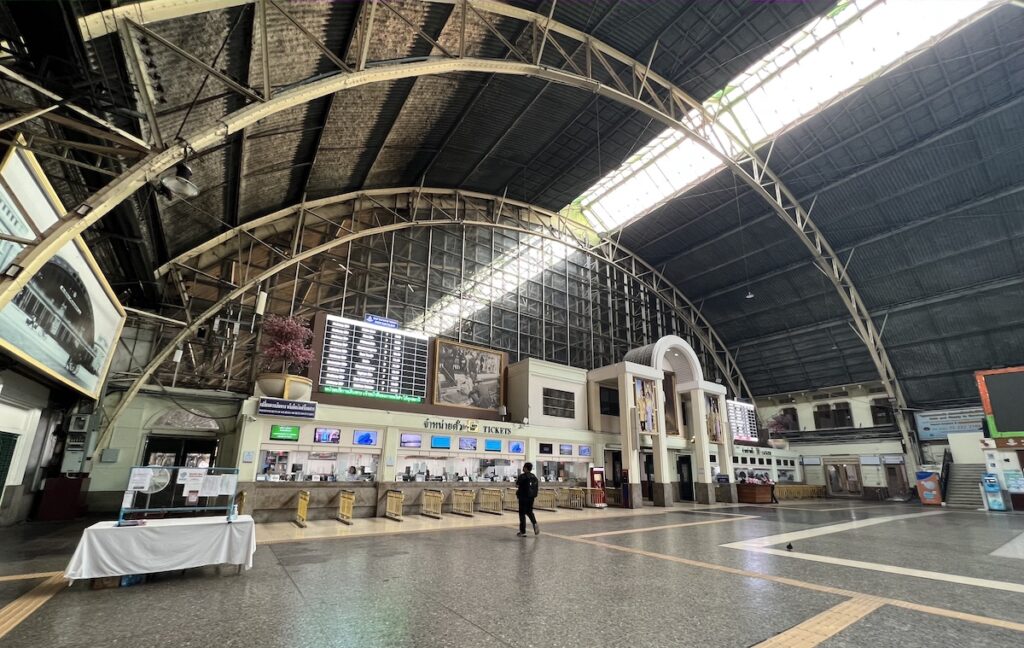
Even though the long distance trains were moved to a new station, Hua Lamphong is a large transportation hub that has all the common facilities. It has enough areas to walk, eat, and sit while waiting for the train.
Cafes and Shops
There are a few nice cafes and food stalls on the ground floor of the station, among them Dunkin Donuts. There’s also a large Cafe Amazon and Black Canyon Coffee on the second floor of the station.
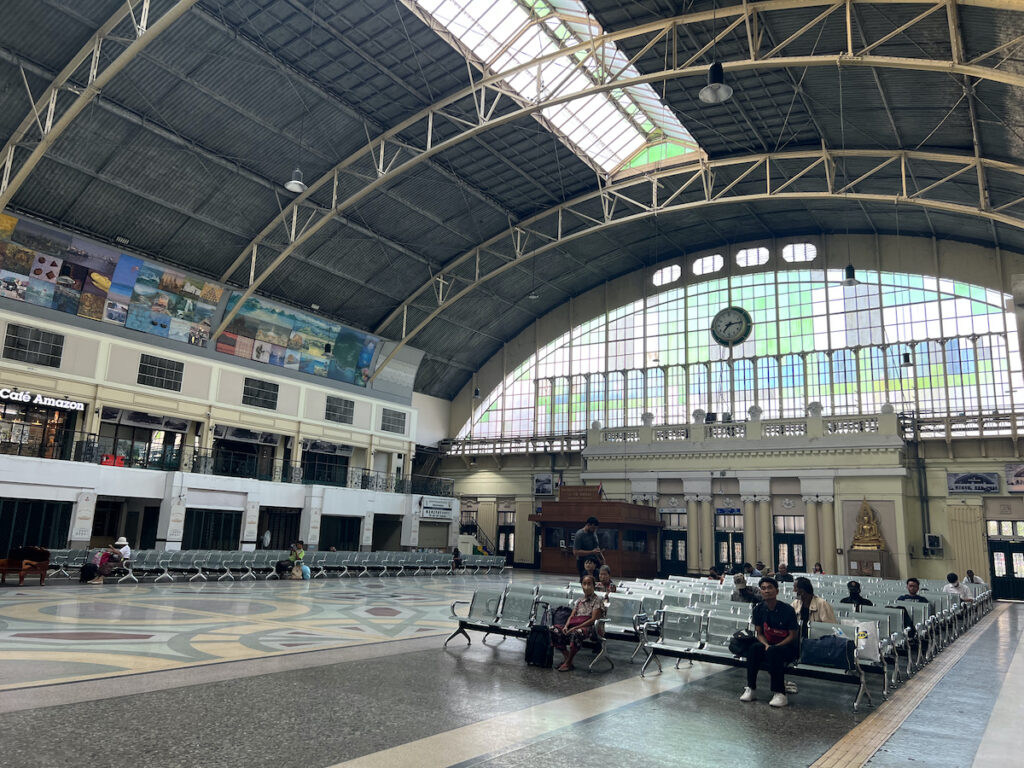
Overall, the Hua Lamphong area is very busy and there’s a 7-eleven 3 minutes walk away, a Starbucks (right next to the Quarter Hualamphong Hotel).
If you fancy some local food, Chinatown is just a few minutes away. You can stroll there for some quick snacks or sit in one of its many restaurants (mostly open in the evening).
Toilets
Toilets are located on the ground floor of the station, and they are also wheelchair accessible (the entrance on the right). Toilets are usually clean. Prepare some cash if you plan to visit toilets, as entrance costs a few baht.
Left Luggage
There’s left luggage on the ground floor of the station. However, we don’t recommend using it as the prices are not guaranteed, and there are no lockers. SUitcases are all stored together, and there’s a possibility of theft.
Ticketing Counters
While it’s better to book tickets in advance, tickets for some trains are available only on the date of travel. Luckily, Hua Lamphong has a few ticket counters in the main hall. Staff speaks good English, so you’ll be able to book tickets even without speaking Thai. Ticket counters usually accept card payments, but like anywhere in Thailand we recommend having some spare cash on you in case there’s no connection in the machine.
Trains Schedule Displays
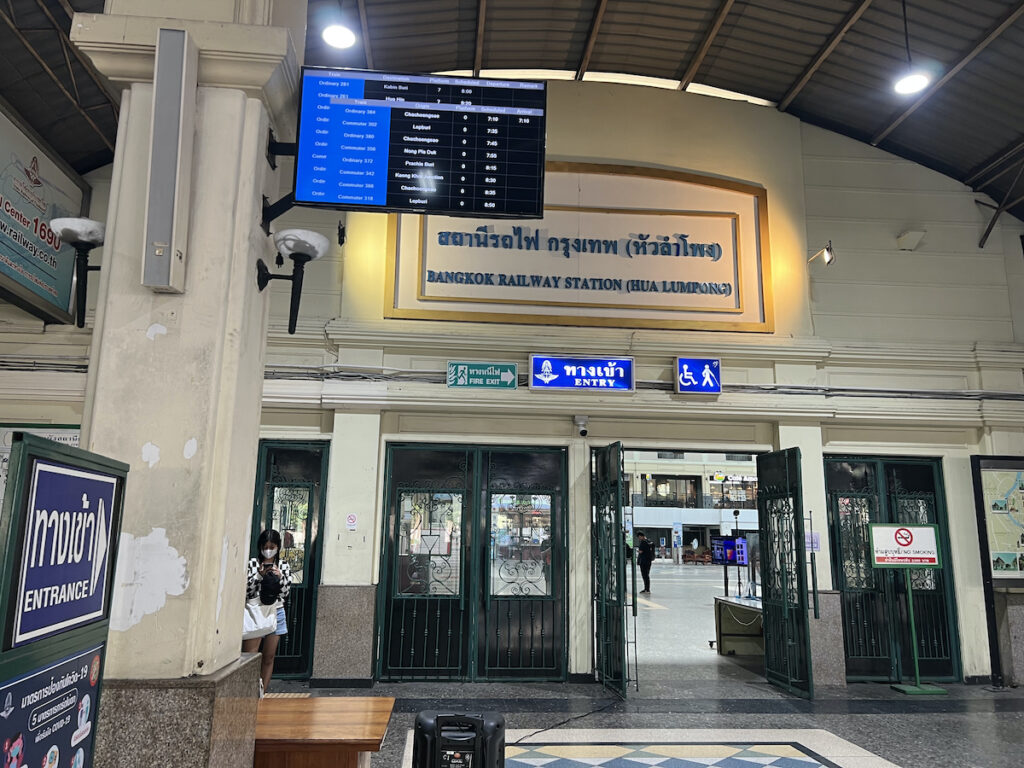
There are a few displays near the side entrance (which is now the main entrance to the station), and in the rear of the main station hall. You can see the departure schedule in English and Thai.
Taxis
There’s a lot of local transport available near the station. You’ll find city taxis, tuk tuks, buses, and entrance into the Hua Lamphong MRT Blue Line station.
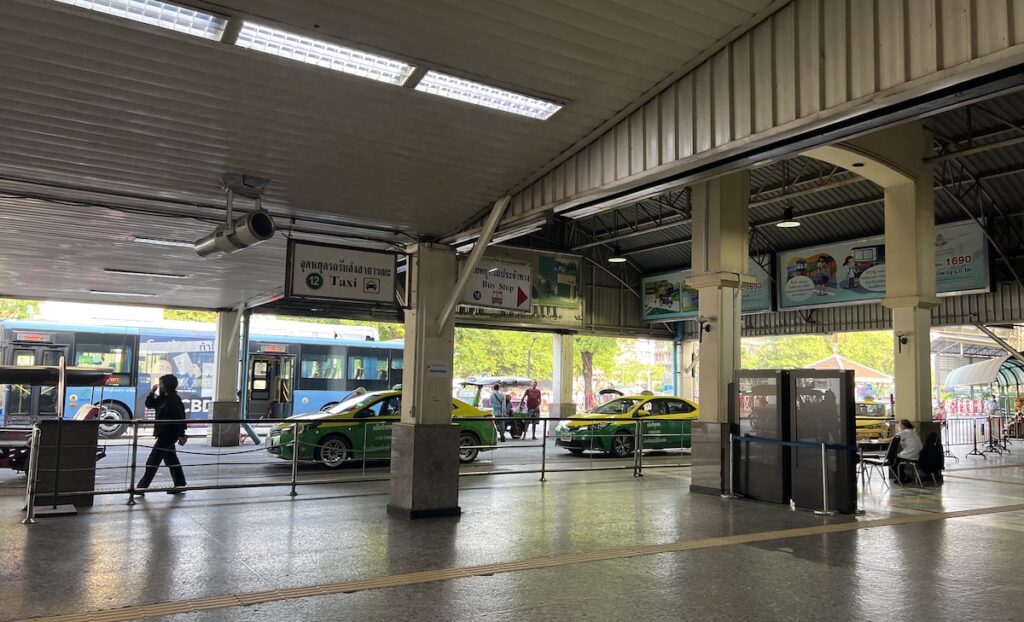
You can also book Grab taxi to anywhere in the city. Hua Lamphong train station is located in the very heart of Bangkok, so it won’t be difficult to find a Grab.
Tickets from Hua Lamphong Train Station
There are two ways you can book tickets from Hua Lamphong Bangkok train station – in the ticket counters at the station, or online.
Ticket Counters
Some trains are available for booking only on the day of travel, so it’s better to check it beforehand, and plan to arrive at the station in advance before the departure. Ticket counters are located in the main station hall, and staff speaks English well enough.
Online Booking
State Railway of Thailand
The State Railways of Thailand operates an online booking system, which has undergone various changes over time. The current system is available at dticket.railway.co.th. It loads very slowly, and doesn’t accept all the foreign credit cards, that’s why we recommend the second foolproof option.
12Go
This is an official reseller of Thailand Train tickets, and you can search and compare schedules for most of the Thailand trains here. What we like about 12Go is that they accept different payment methods and have a support team who can answer your queries about the booking.
Local Transportation from the Hua Lamphong Train Station
If you have an onward journey, traveling from Hua Lamphong is easy. There’s a bus station nearby, local taxis, and Hua Lamphong MRT station.
Taxis
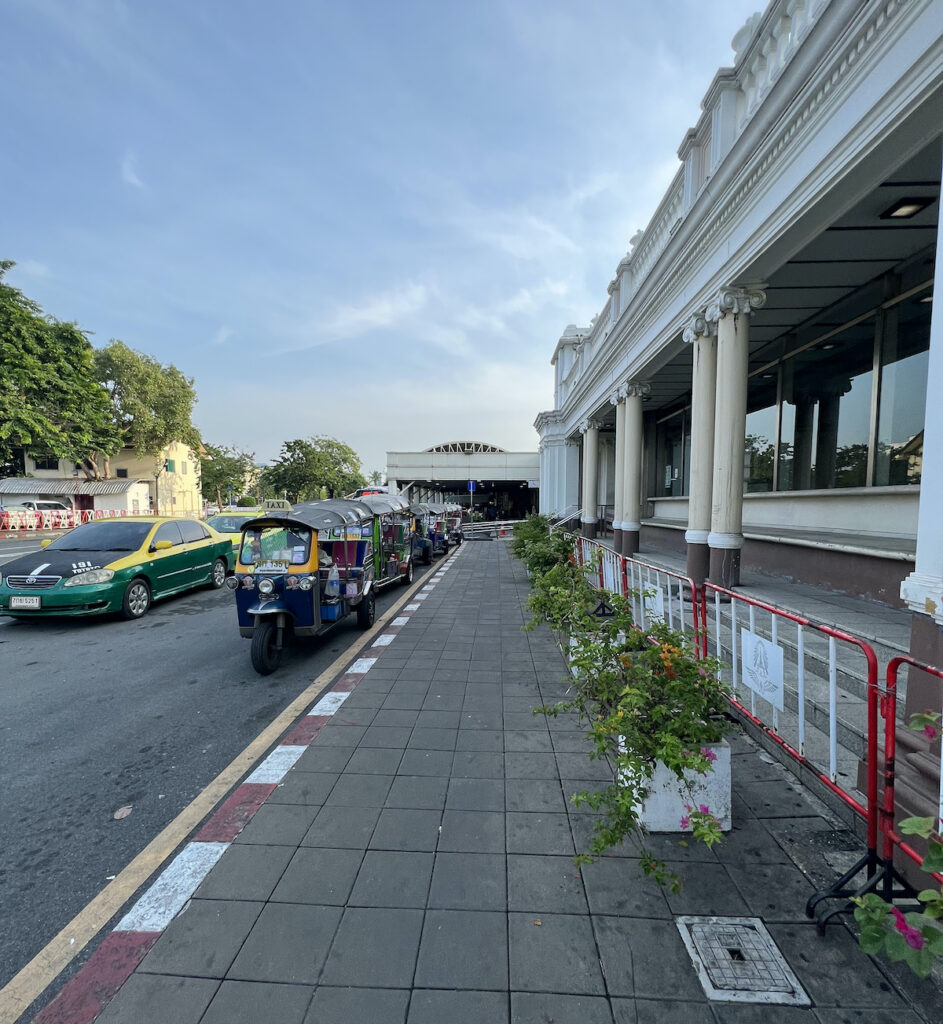
They are located on the left side of the station. There’s usually a long line of tuk tuks and taxis waiting to take you anywhere in bangkok. Approximate fares to the Suvarnabhumi Airport is 250 baht, and to Khao San Road approximately 120 baht. Ask the driver if the taxi is metered, and make sure they switch it on. Alternatively, discuss the total journey price beforehand (to avoid any unpleasant surprises).
Of course, you can also order a Grab from the station.
MRT Hua Lamphong Station
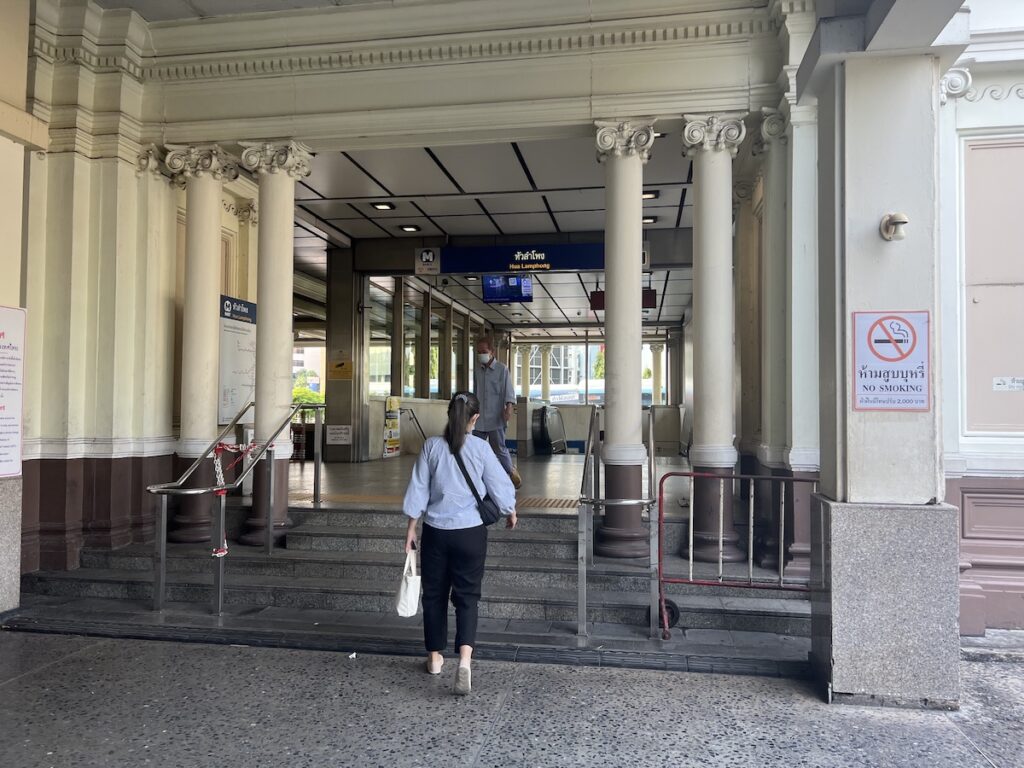
Metro tickets cost up to 45 baht, depending on the destination station.
MRT Hua Lamphong Station is located on the MRT Blue Line. It stretches through the city, connecting to Bang Sue train station and has a total of 15 stops (among them Sukhumvit). MRT Blue Line has convenient connection with the BTS Skytrain at Silom, Sukhumvit, and Chatchuchak Park stations. You can also change stations at Phetchaburi MRT station, allowing a transfer to the Airport Link for direct access to Suvarnabhumi Airport.
Bus Station
To reach the bus stop, head to the left side of the train platforms. When exiting the train station building, take the top-left exit and turn right.
You can take buses to Mochit Bus Terminal, to Khao San Road, to Silom Road and other popular places in Bangkok.
Hua Lamphong Ferry Terminal

This is small ferry terminal on the Khlong Phadung Krung Kasem, which works only when the water level in the canal is high enough. You can buy tickets at the pier, and the boats depart every 20 minutes. A nice way t travel and see some historical scenery of Bangkok.
Top Attractions Near the Hua Lamphong Bangkok Train Station
If you have a few spare hours and find yourself near the station, you’re in luck. Hua Lamphong train station is in the very heart of Bangkok, near the vibrant Chinatown district. There are also a few popular temples in the area. Hua Lamphong is a popular tourist place, and you can reach most attractions on foot. Here’s our recommended must-visit list:
- Chinatown – 800 meters – 11 minutes walk.
- Wat Traimit Withayaram Worawihan (the Temple of Golden Buddha) – 400 meters – 6 minutes walk.
- Wat Samphanthawongsaram – 850 meters – 12 minutes walk.
- Sampeng Lane Market – 1.4 kilometers – 19 minutes walk.
Railway Museum at the Hua Lamphong Train Station
There is a small train museum at the Bangkok Train Station. It has a small exhibition, but it’s worth visiting while you wait for the train. It is open Tuesday – Saturday 10.00 – 18.00, and the entrance is free.

